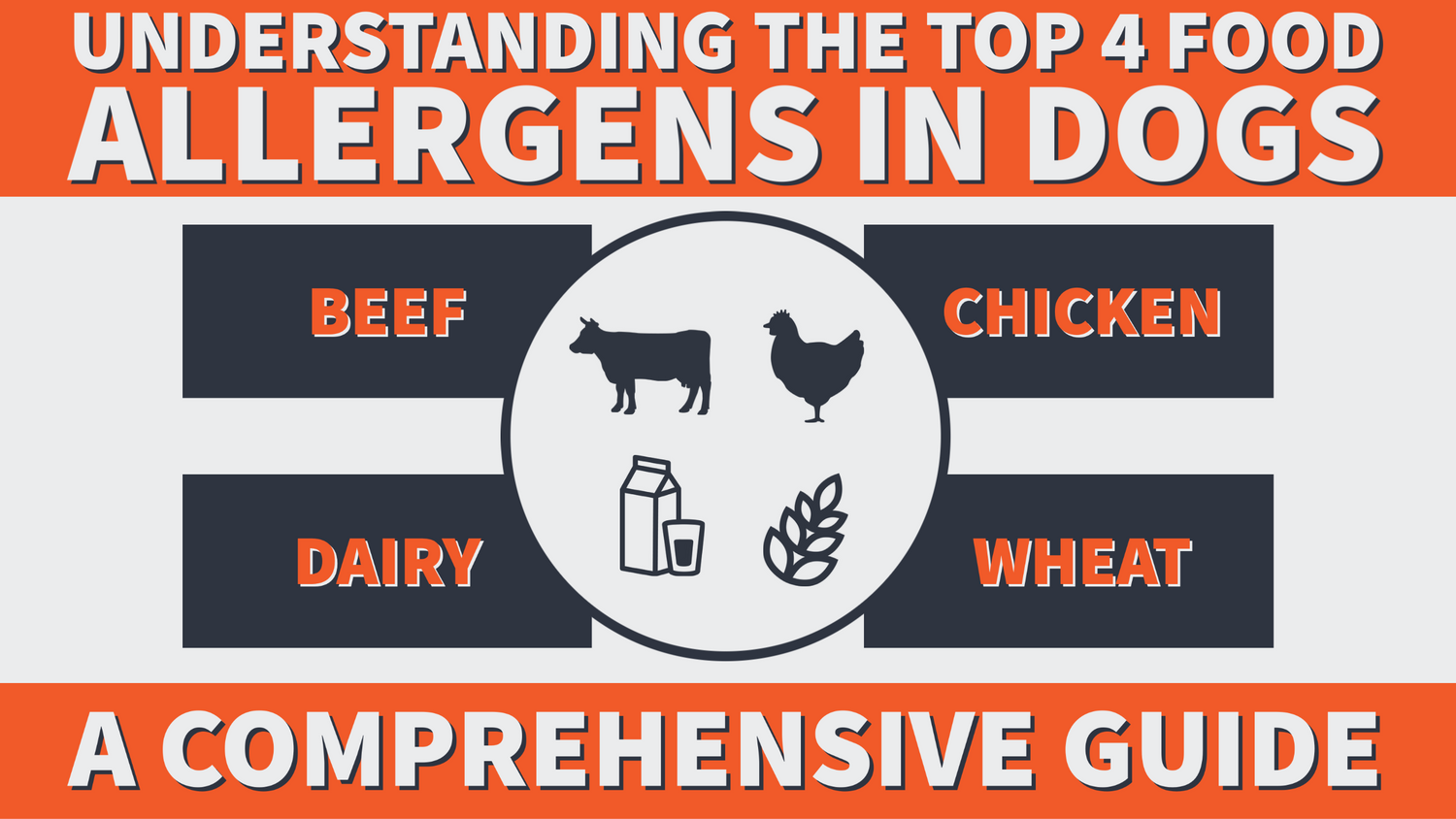Introduction
As pet owners, we strive to provide the best care and nutrition for our beloved canine companions. However, just like humans, dogs can also suffer from food allergies that can lead to various health issues. Identifying and understanding the most common food allergens in dogs is crucial for ensuring their well-being. In this blog post, we will delve into the top 4 food allergens in dogs, backed by scientific research and expert opinions.
1. Beef
Beef is often considered one of the leading allergens in dogs. It contains proteins such as alpha-galactosidase, which can trigger an immune response in susceptible canines. Studies have shown that beef allergies can manifest as gastrointestinal issues, skin problems, and even respiratory distress in some cases[^1][^2].
2. Dairy Products
While dogs are naturally lactose intolerant, some can develop allergies to dairy products. The proteins found in milk, such as casein and whey, are the usual culprits. Allergic reactions to dairy can result in digestive problems, skin inflammation, and ear infections in dogs[^3].
3. Chicken
Chicken is a widely-used protein source in commercial dog foods, making it a common allergen. The proteins in chicken, particularly ovalbumin and lysozyme, can induce immune reactions in sensitive dogs. Symptoms may include itching, hives, gastrointestinal upset, and ear infections[^4][^5].
4. Wheat
Wheat and other grains containing gluten can be problematic for dogs with sensitivities. Gluten is a composite protein found in wheat, barley, and rye, and it can cause allergic reactions. Dogs experiencing wheat allergies often display symptoms like itching, chronic ear infections, and gastrointestinal disturbances[^6].
Conclusion
Recognizing the top 4 food allergens in dogs is crucial for managing their dietary needs and ensuring their overall health. If you suspect that your dog is experiencing food allergies, it is essential to consult with a veterinarian or canine nutritionist. They can help with an elimination diet to identify specific allergens and recommend appropriate dietary changes.
Remember, every dog is unique, and individual sensitivities can vary. Therefore, it is essential to pay attention to your dog's reactions to different foods and seek professional guidance when necessary. Opting for hypoallergenic or limited-ingredient diets may be recommended for dogs with known food allergies.
By prioritizing your dog's dietary requirements and providing them with appropriate nutrition, you can help alleviate discomfort and improve their overall quality of life.
References:
[^1]: Olivry, T., DeBoer, D.J., Griffin, C.E. et al. Food for thought: pondering the relationship between canine atopic dermatitis and cutaneous adverse food reactions. Vet Dermatol 27, 289-e69 (2016). DOI: 10.1111/vde.12332
[^2]: Hakanen, E., et al. (2018). Clinical Features of Food Allergy in Dogs. Acta Veterinaria Scandinavica, 60(1), 60. DOI: 10.1186/s13028-018-0411-7
[^3]: Carlotti, D. N., Remy, I., Prost, C., & Goudez, R. (2004). Clinical and Laboratory Findings in 63 Dogs with Lactogenic Dermatitis. Veterinary Dermatology, 15(4), 207-214. DOI: 10.1111/j.1365-3164.2004.00392.x
[^4]: Reedy, L. M., & Miller, W. H. (1990). Cutaneous Reactions Associated with Food Hypersensitivity in the Dog. Journal of the American Veterinary Medical Association, 196(7), 1076-1079.
[^5]: Verlinden, A., Hesta, M., Millet, S., & Janssens, G. P. J. (2006). Food Allergy in Dogs and Cats: A Review. Critical Reviews in Food Science and Nutrition, 46(3), 259-273. DOI: 10.1080/10408690590957166
[^6]: Bizikova, P., Olivry, T., & Dunston, S. M. (2015). A Review of the Role of Food Protein–Induced Enteropathy in Labrador Retrievers. Veterinary Dermatology, 26(2), 79-e24. DOI: 10.1111/vde.12174
Further Reading:
Valentine, B. (2020). Review of critically appraised topics on adverse food reactions of companion animals. The Canadian Veterinary Journal, 2020 May, 61(5): 537-539



0 comments